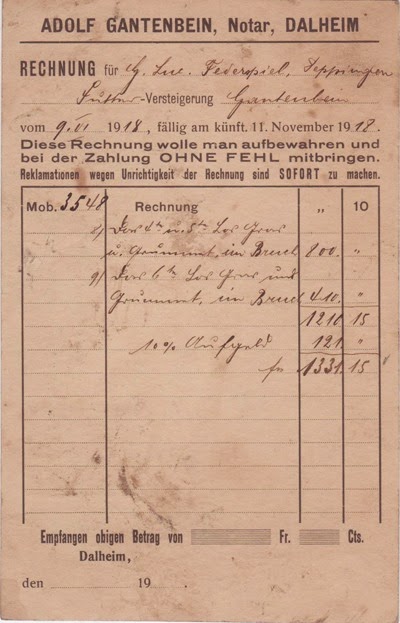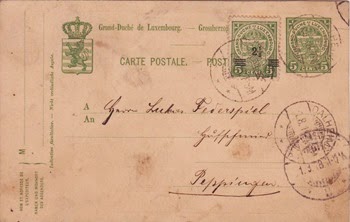The Merriam-Webster Dictionary defines ephemera as “paper items (as posters, broadsides, and tickets) that were originally meant to be discarded after use but have since become collectibles.” So the address sticker shown above, which I found on the back of a rather boring 10-centime GD Adolphe postal card, falls well within the definition. And the implication is obvious. As philatelists, our study of covers and cards should extend not only to what governments and their postal services put on or did to the covers and cards but also to what non-governmental users added to the covers and cards. Collectors of air mail labels have already recognized the philatelic significance of ephemera. Likewise, the forward-looking FSPL has published a monograph on government-printed labels that we find on covers.
Every philatelist should have an album reserved for these beyond-the-back-of-the-book treasures. Many are one-of-a-kind, and often the artistry is exquisite, giving us a glimpse into the cultural tastes of a long-gone era. Don’t neglect this fascinating but little appreciated area.
Esch-sur-Alzette
28 Nov 1899
to nearby
Longwy-Bas, France
Lowen-Apotheke, Esch a/Alzette
Green & Black Circular Label
”St. Welschbillig”




